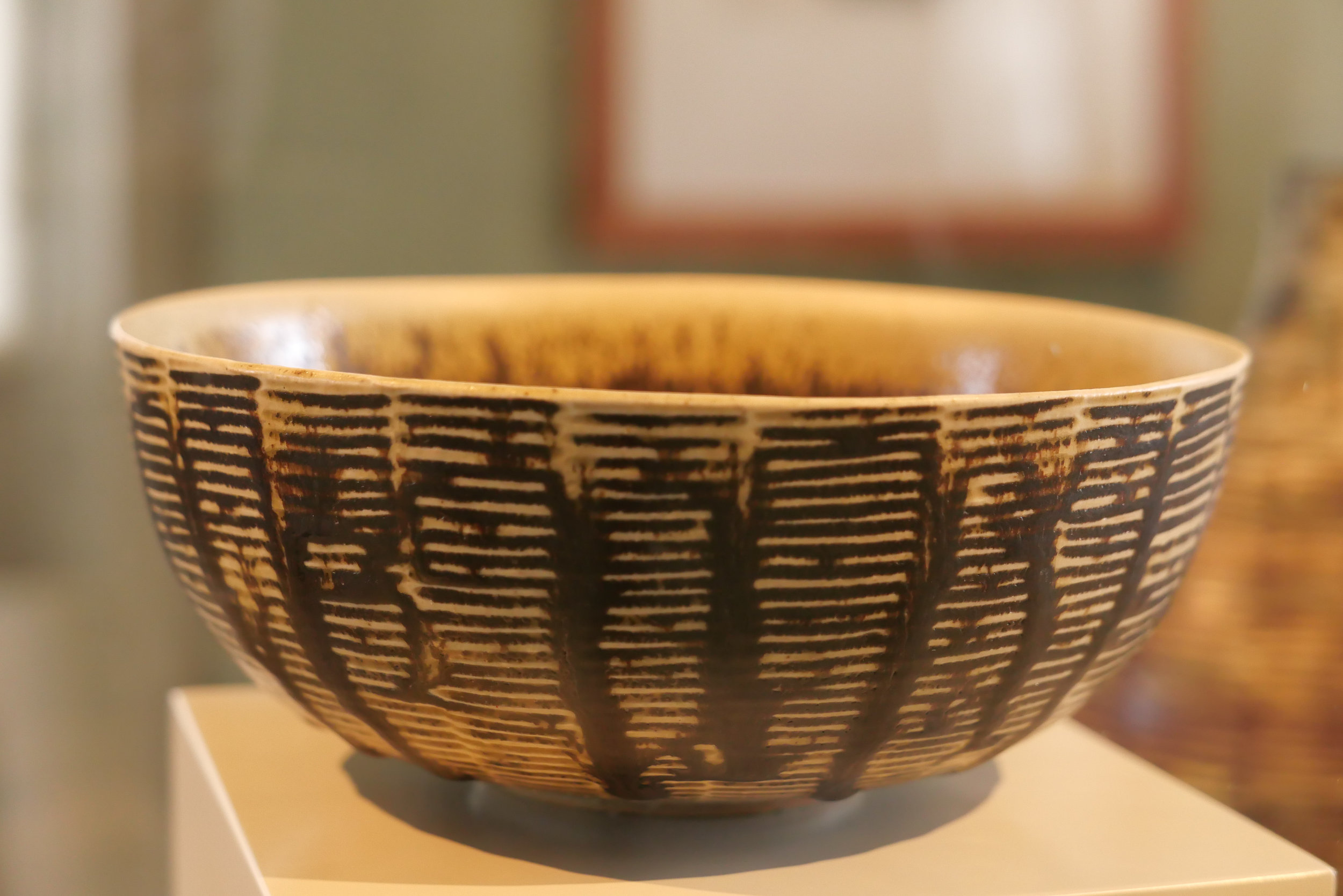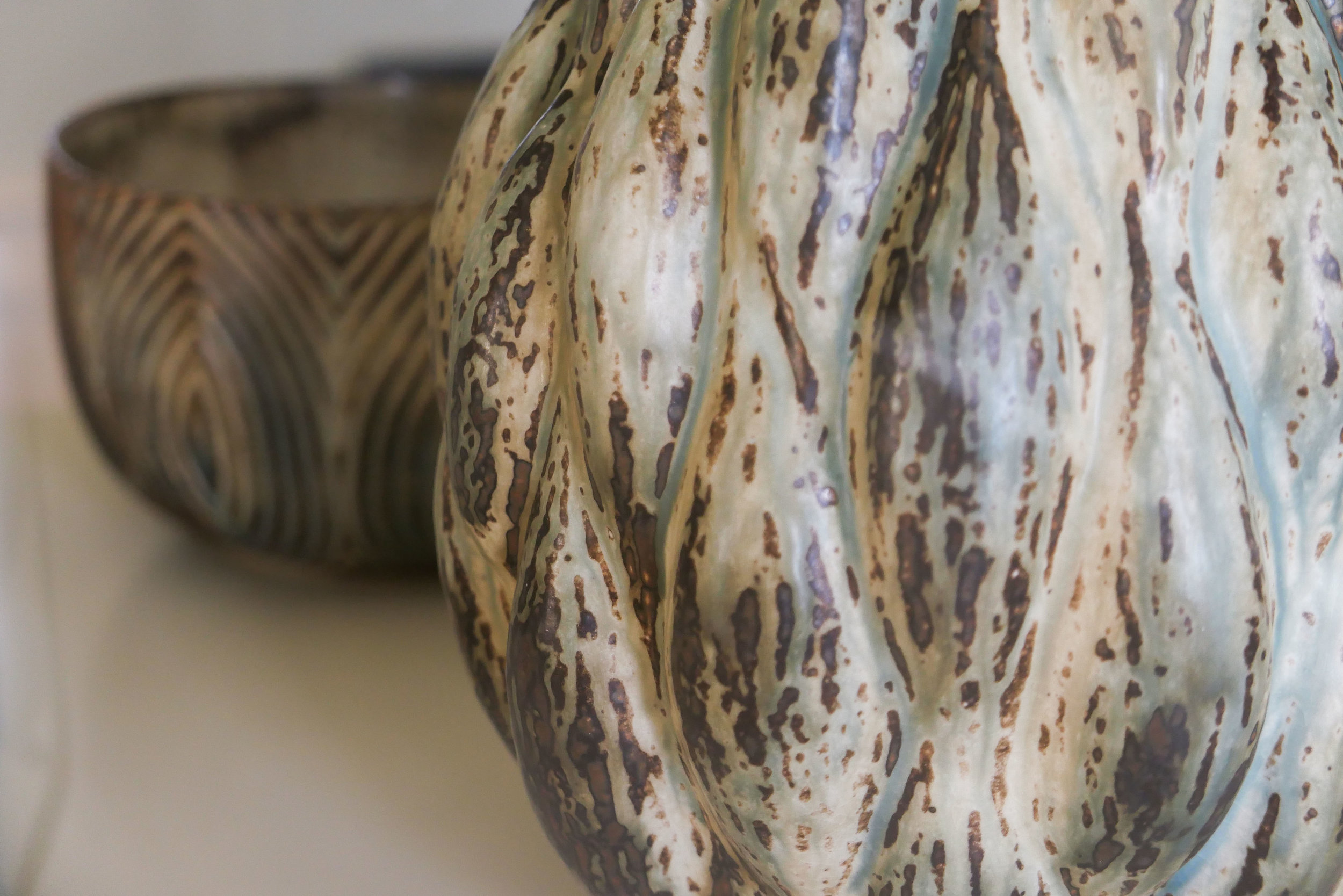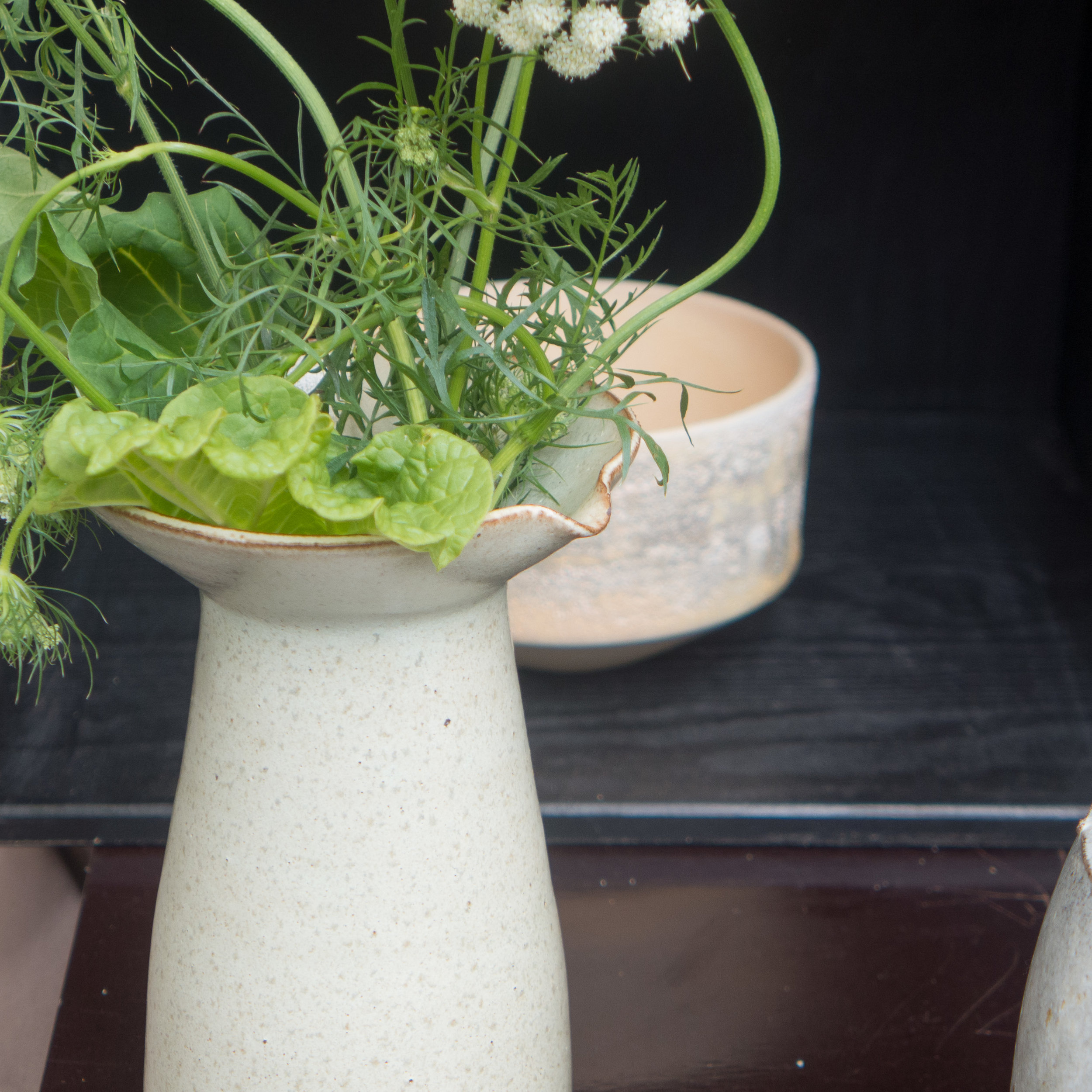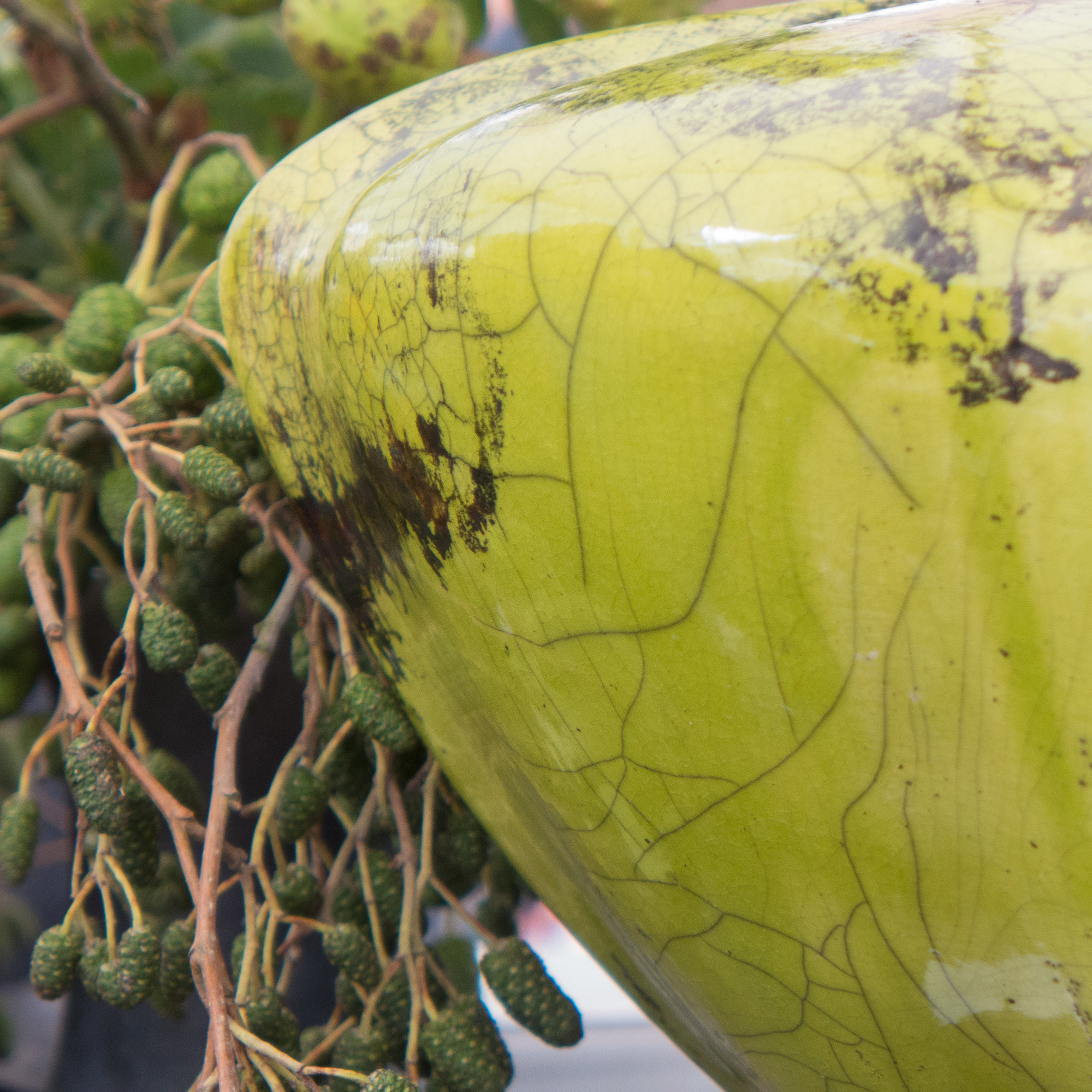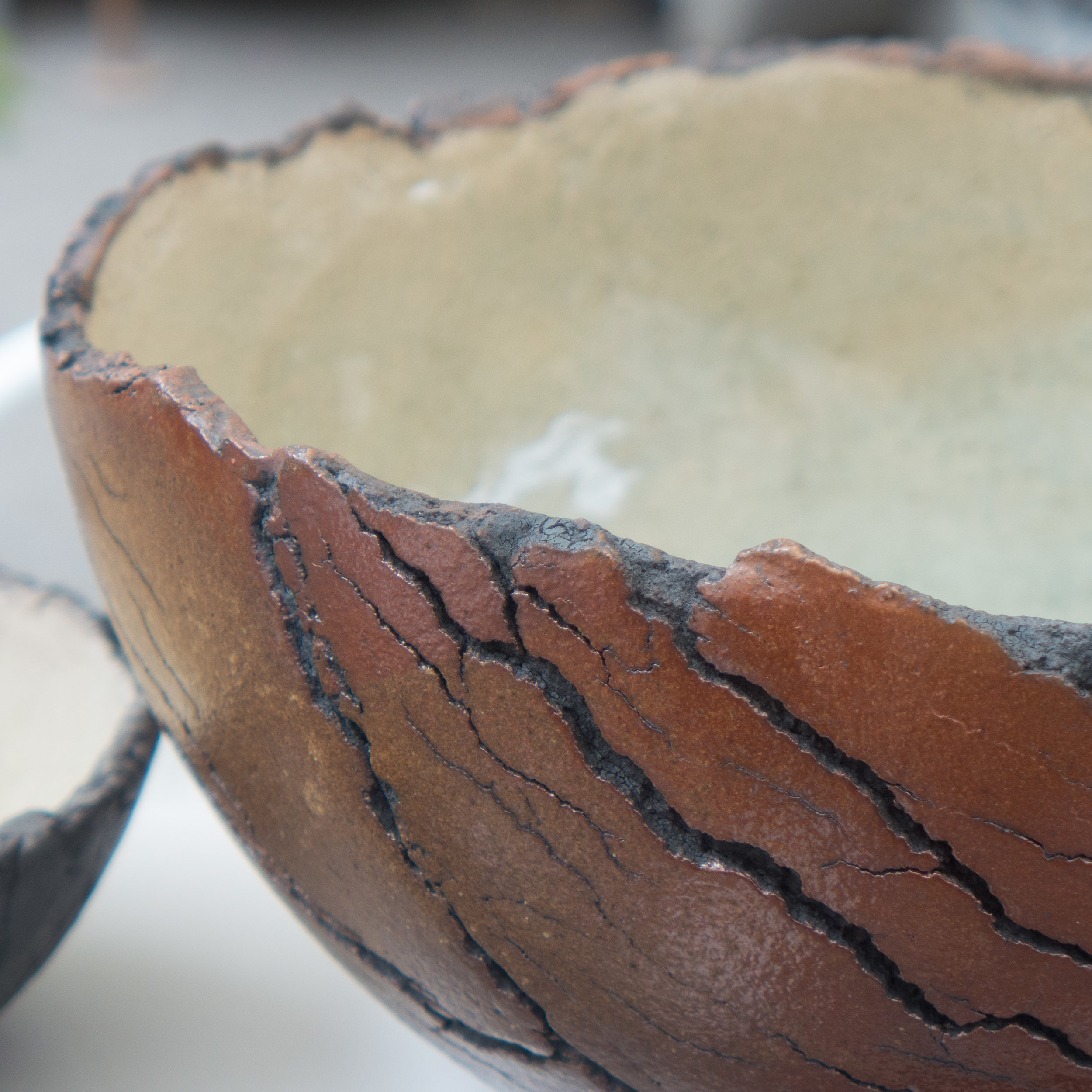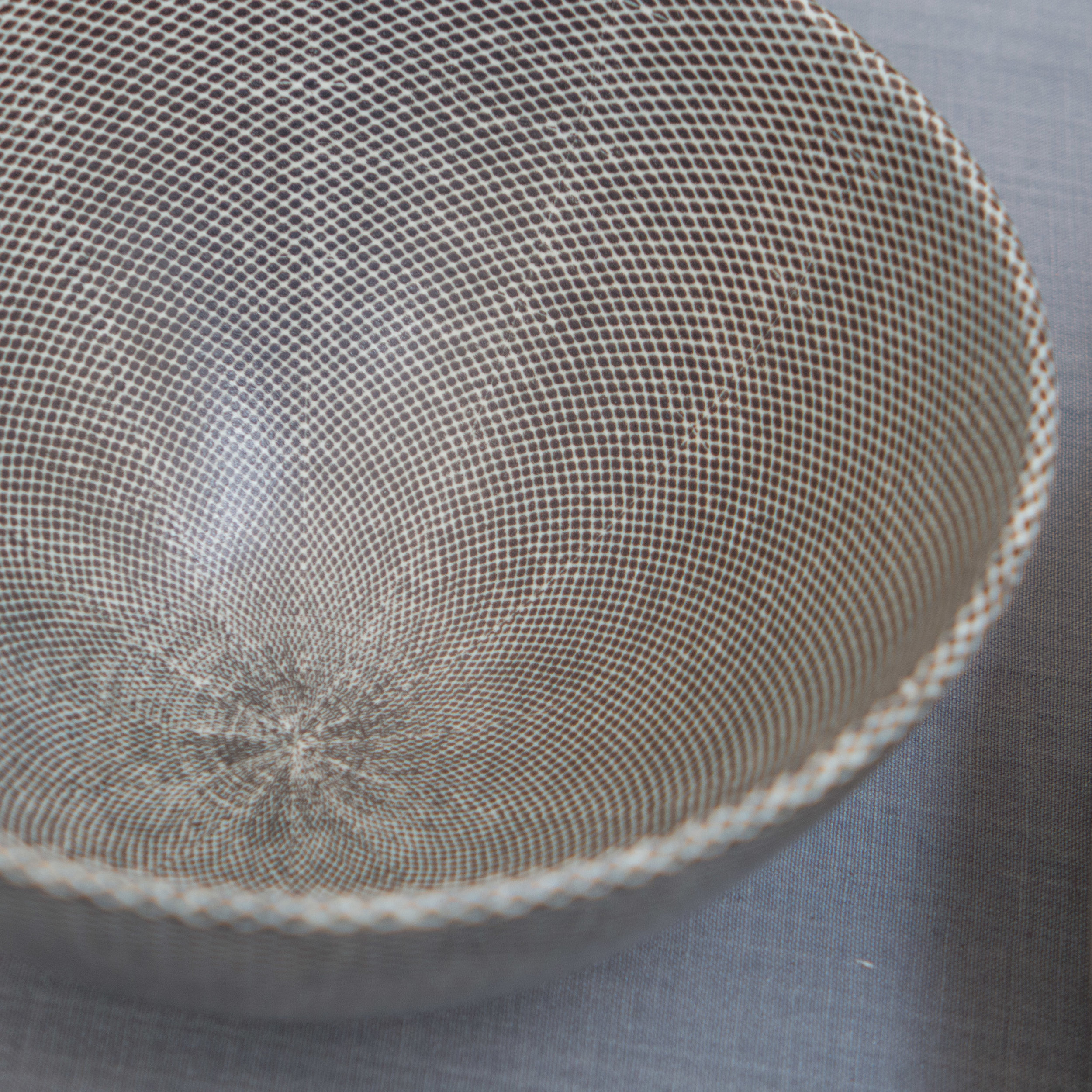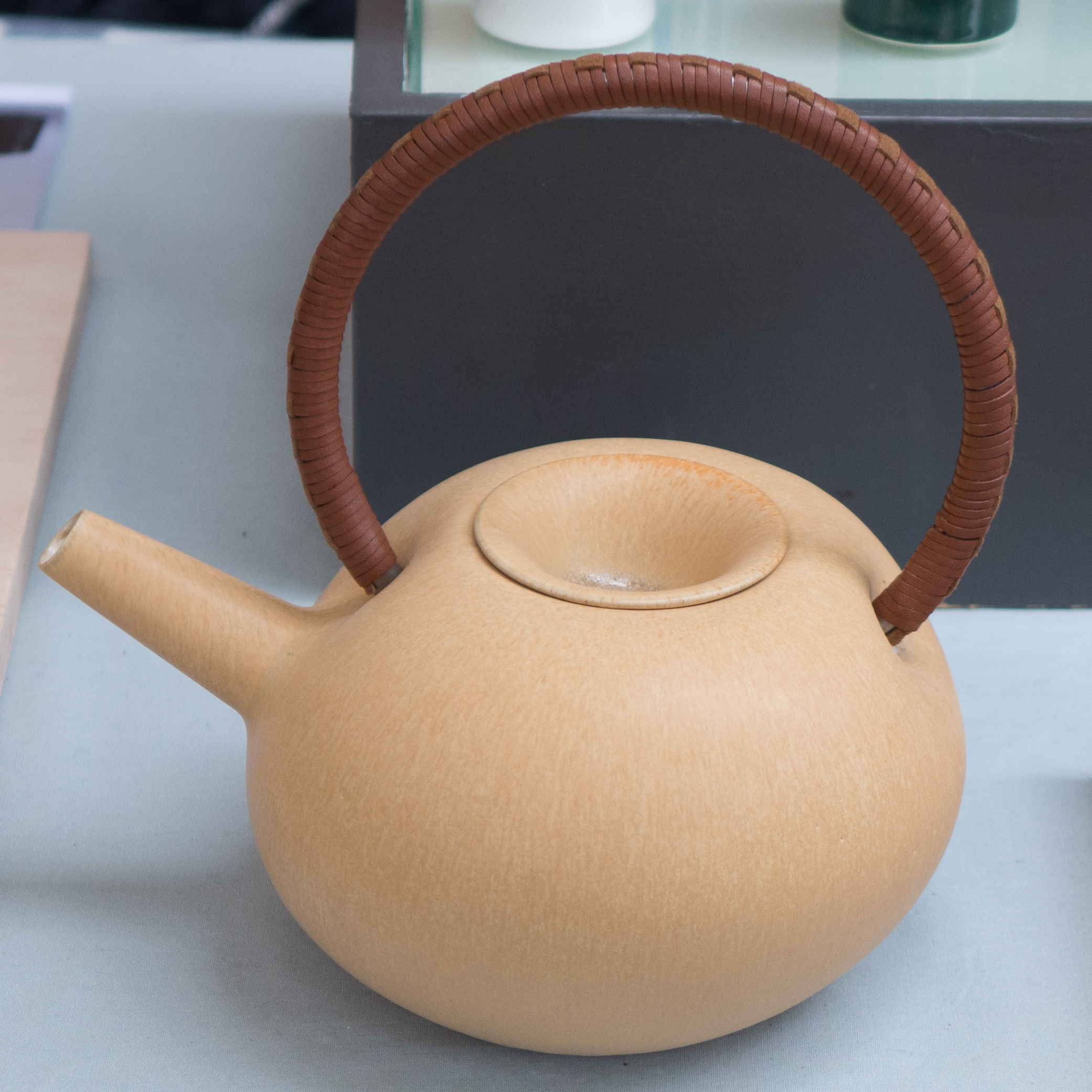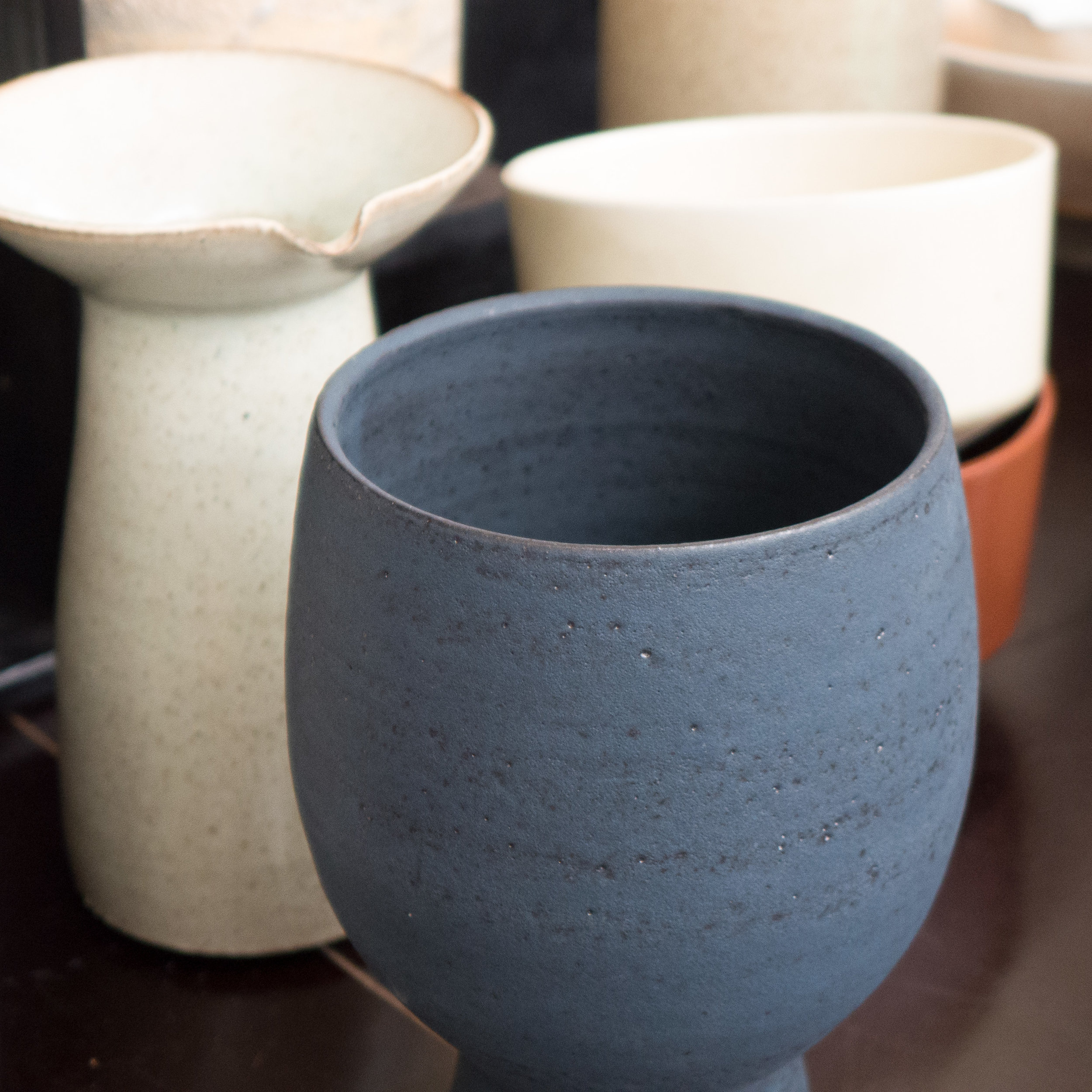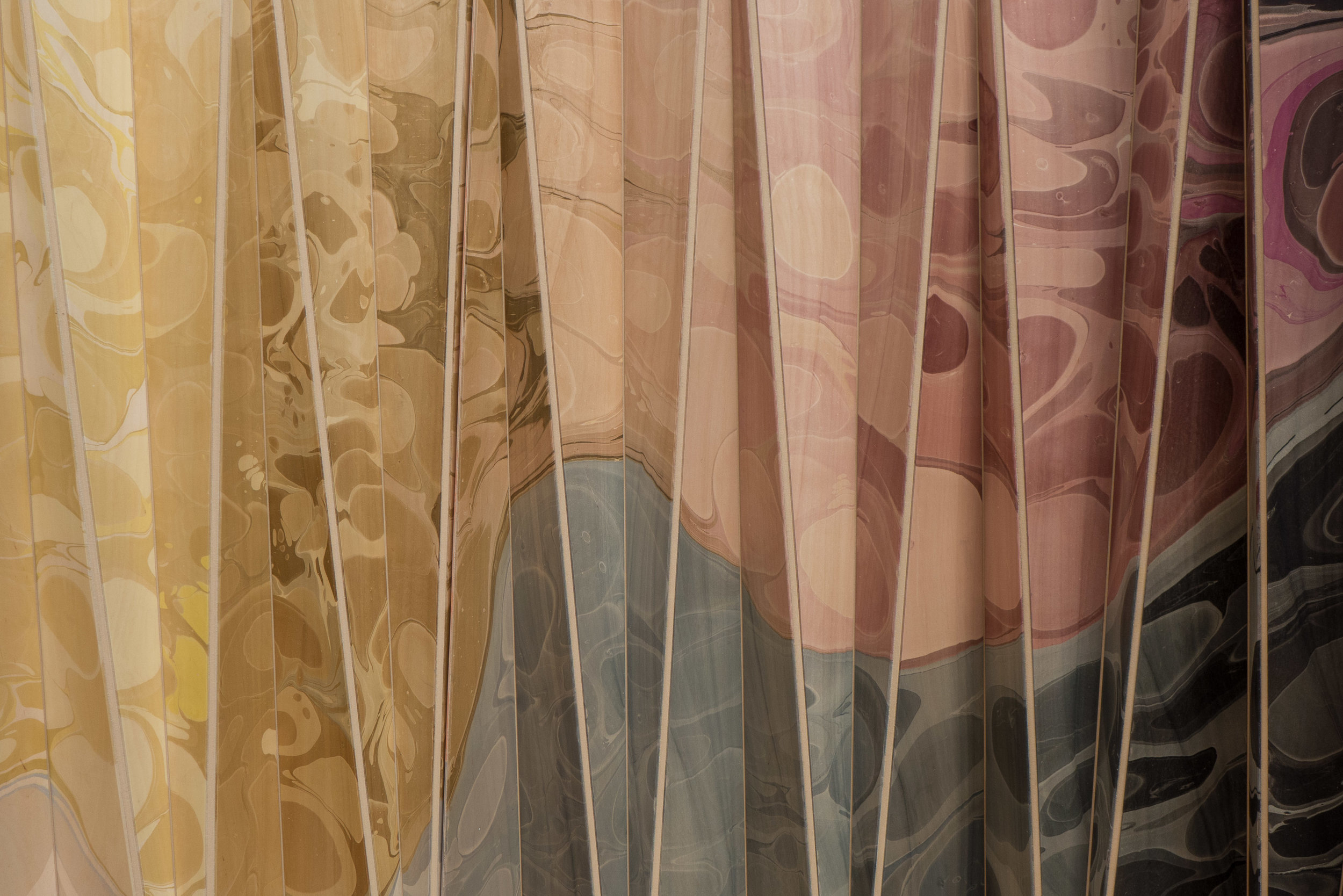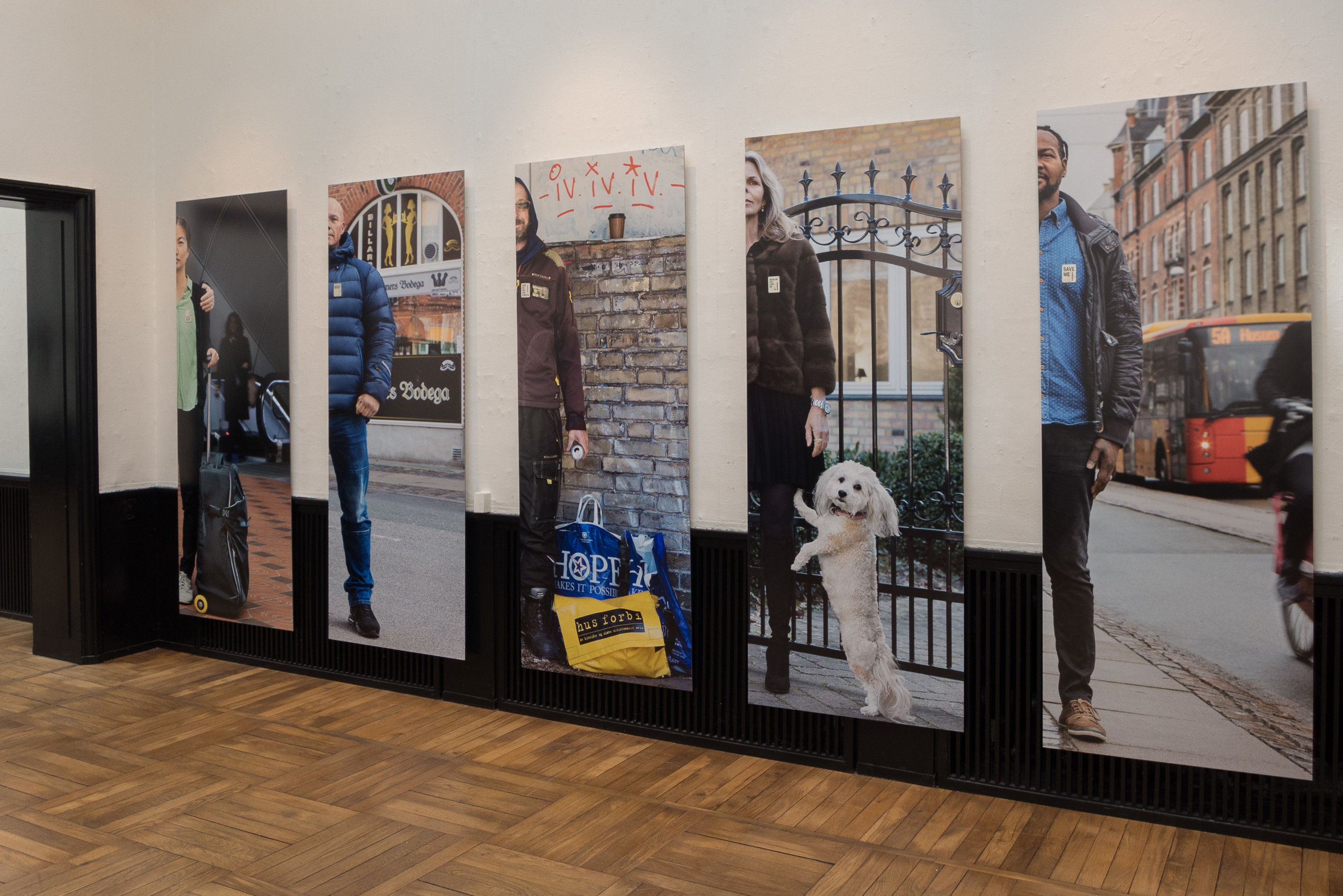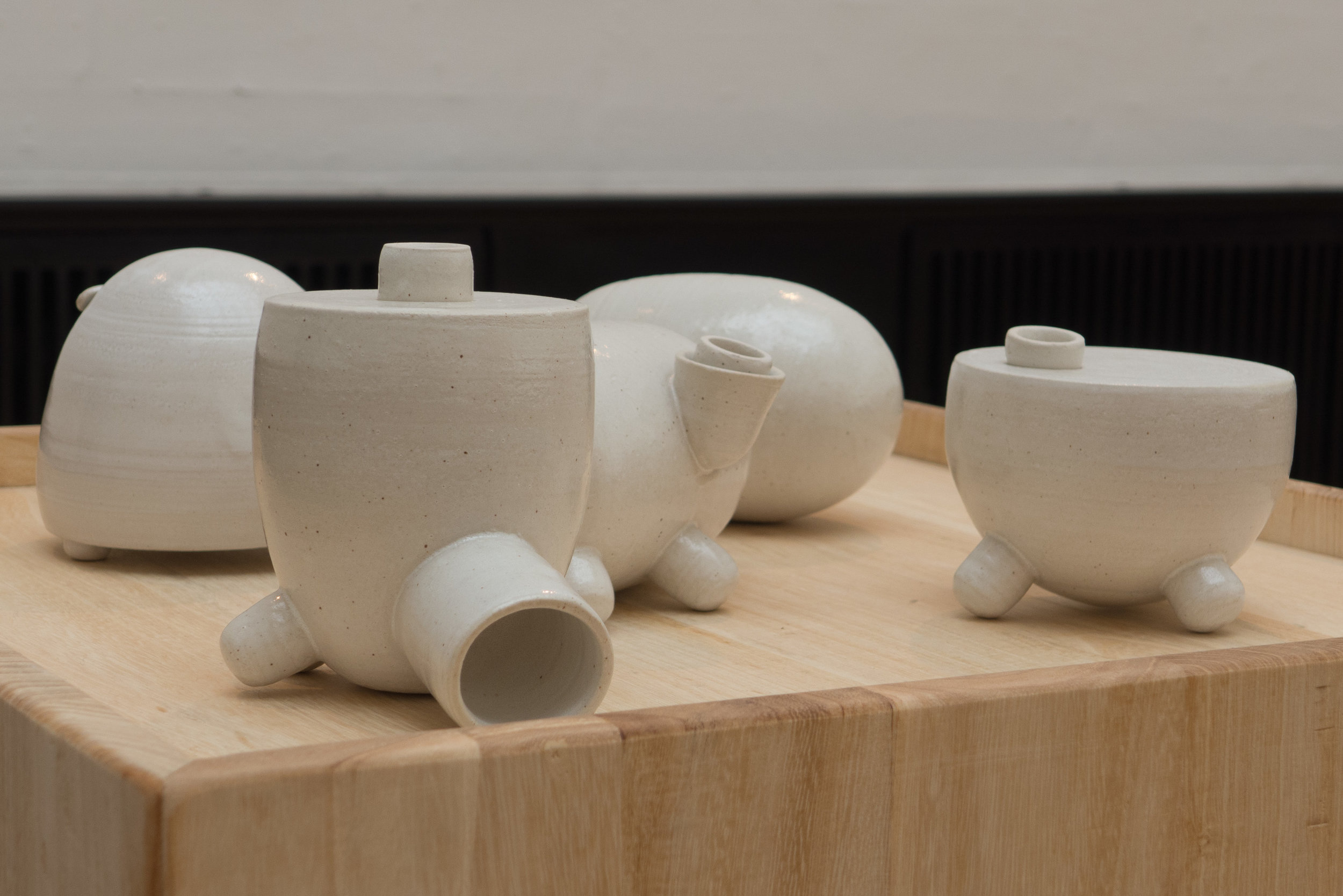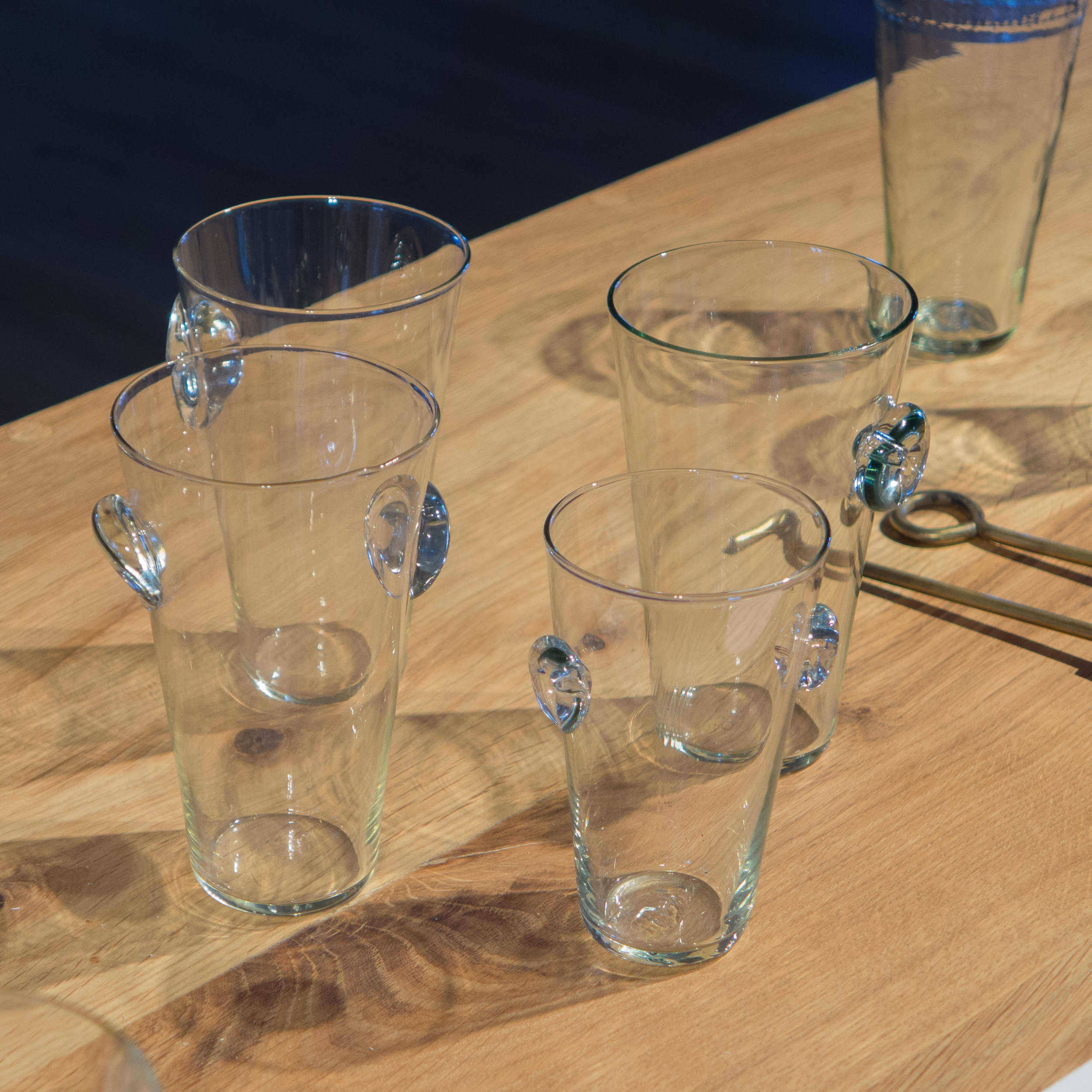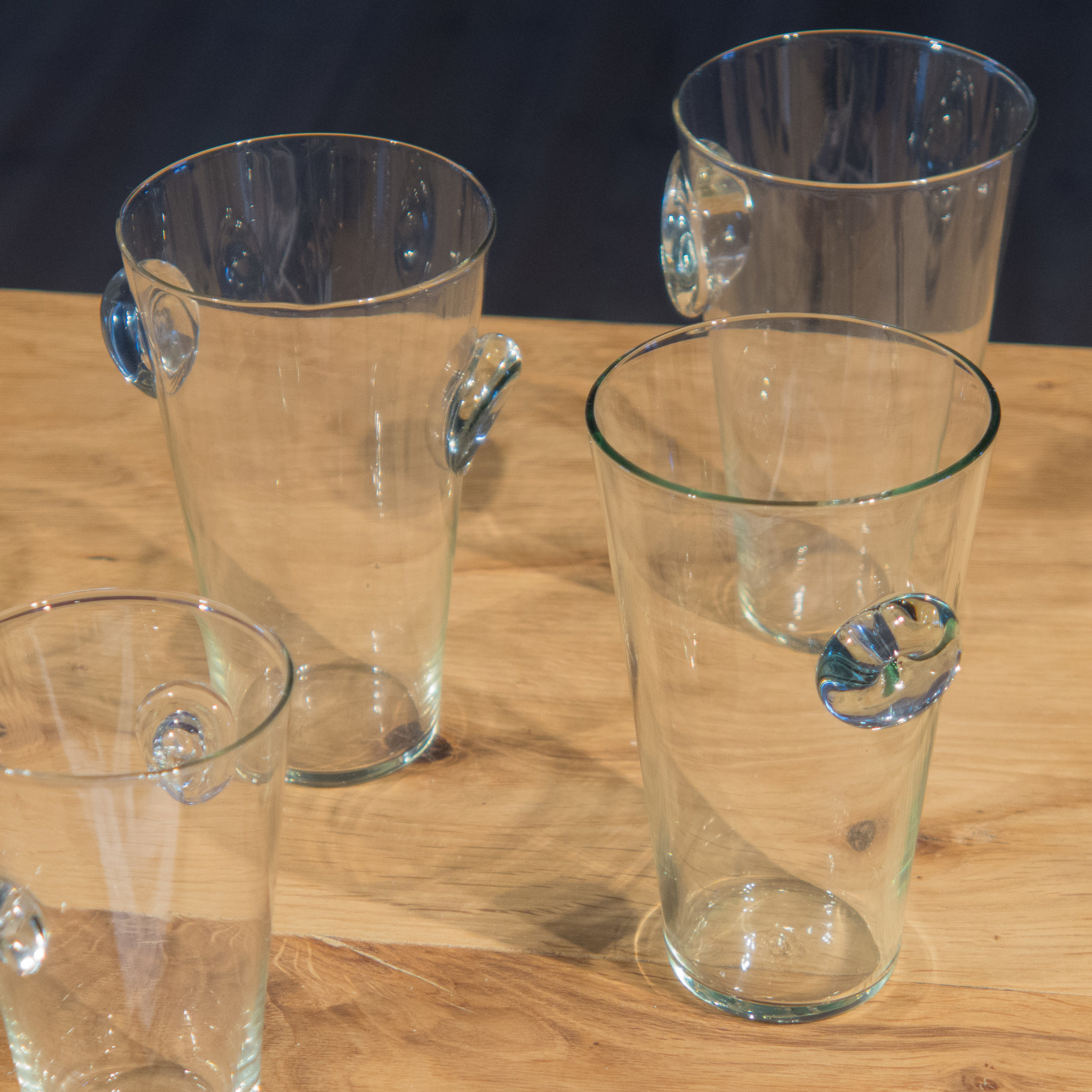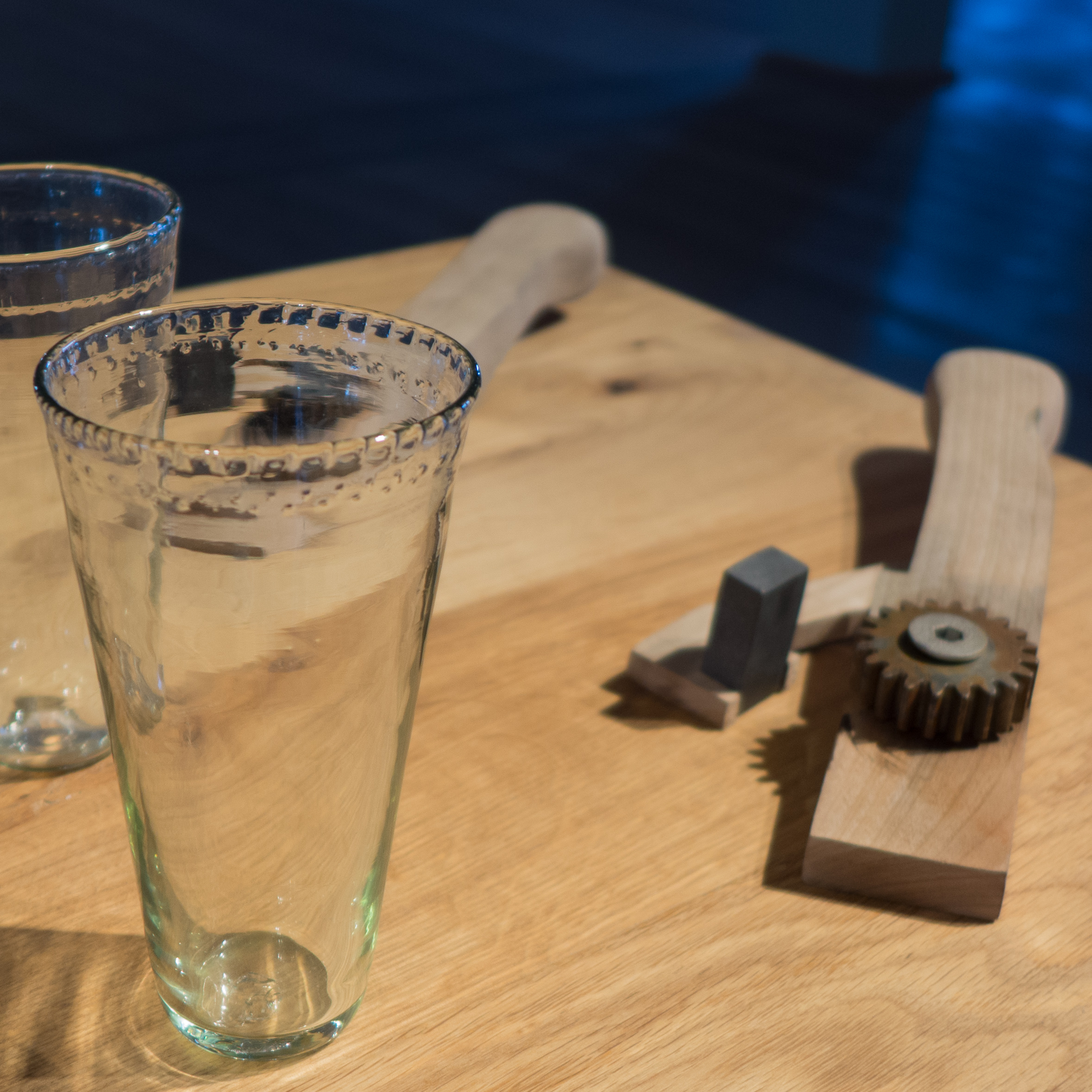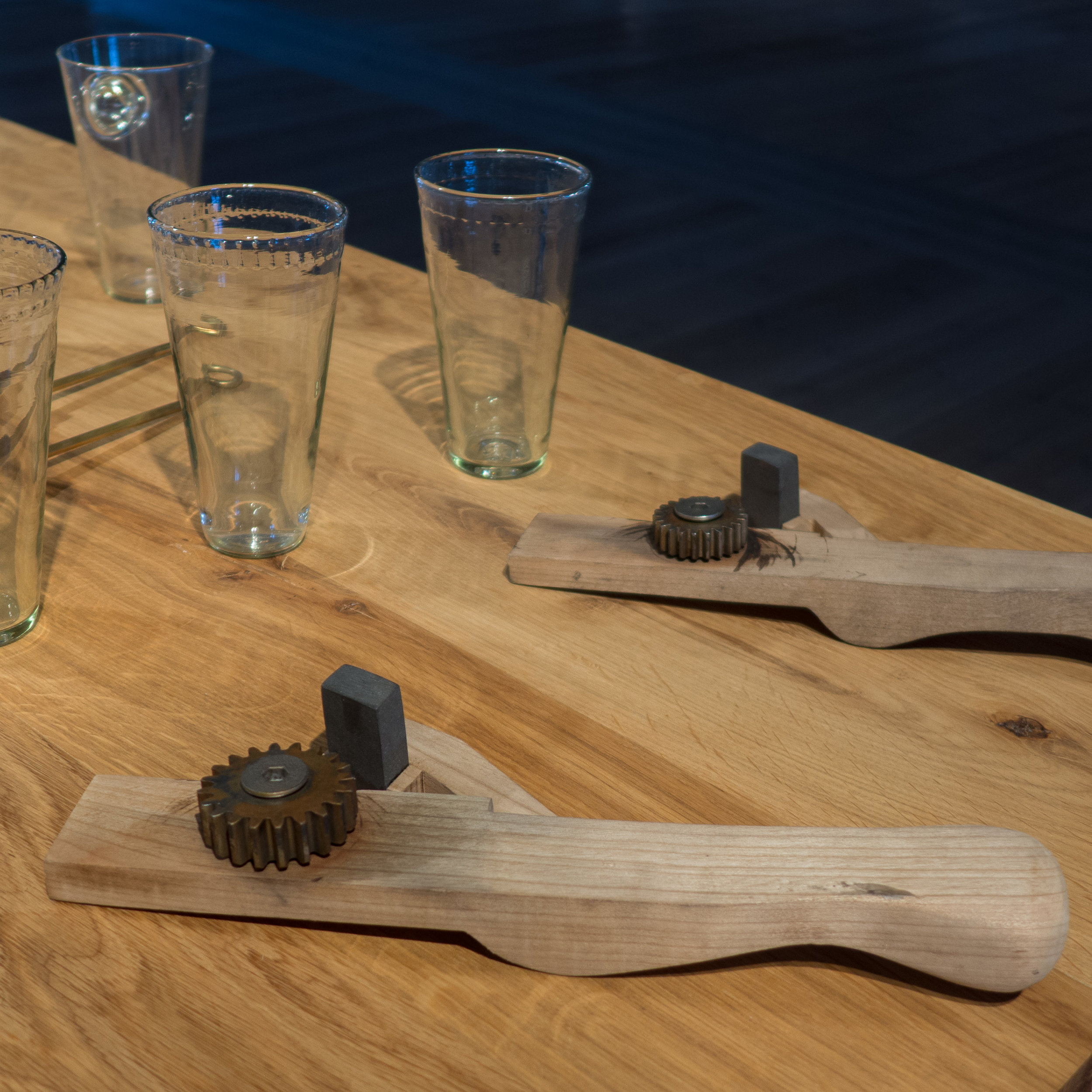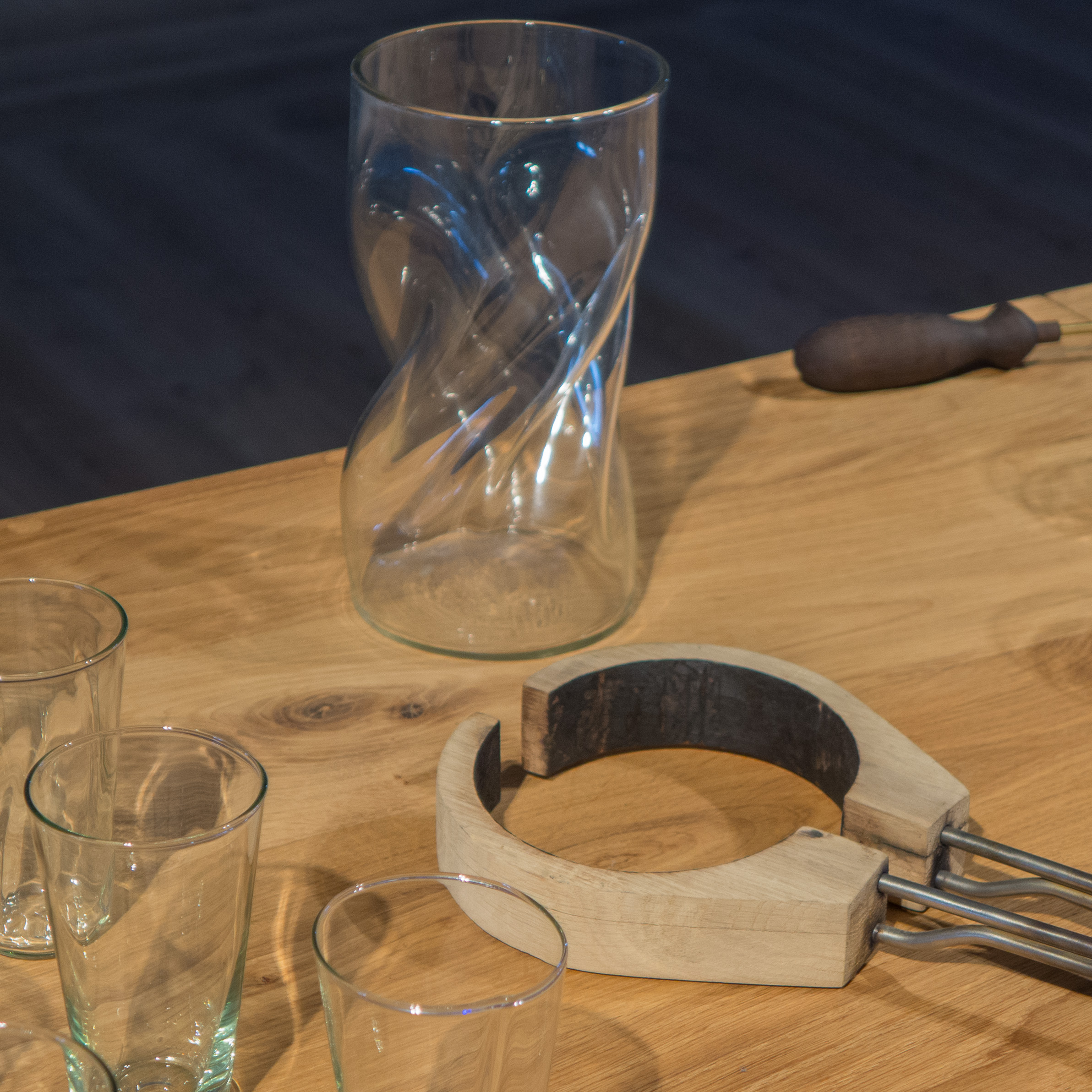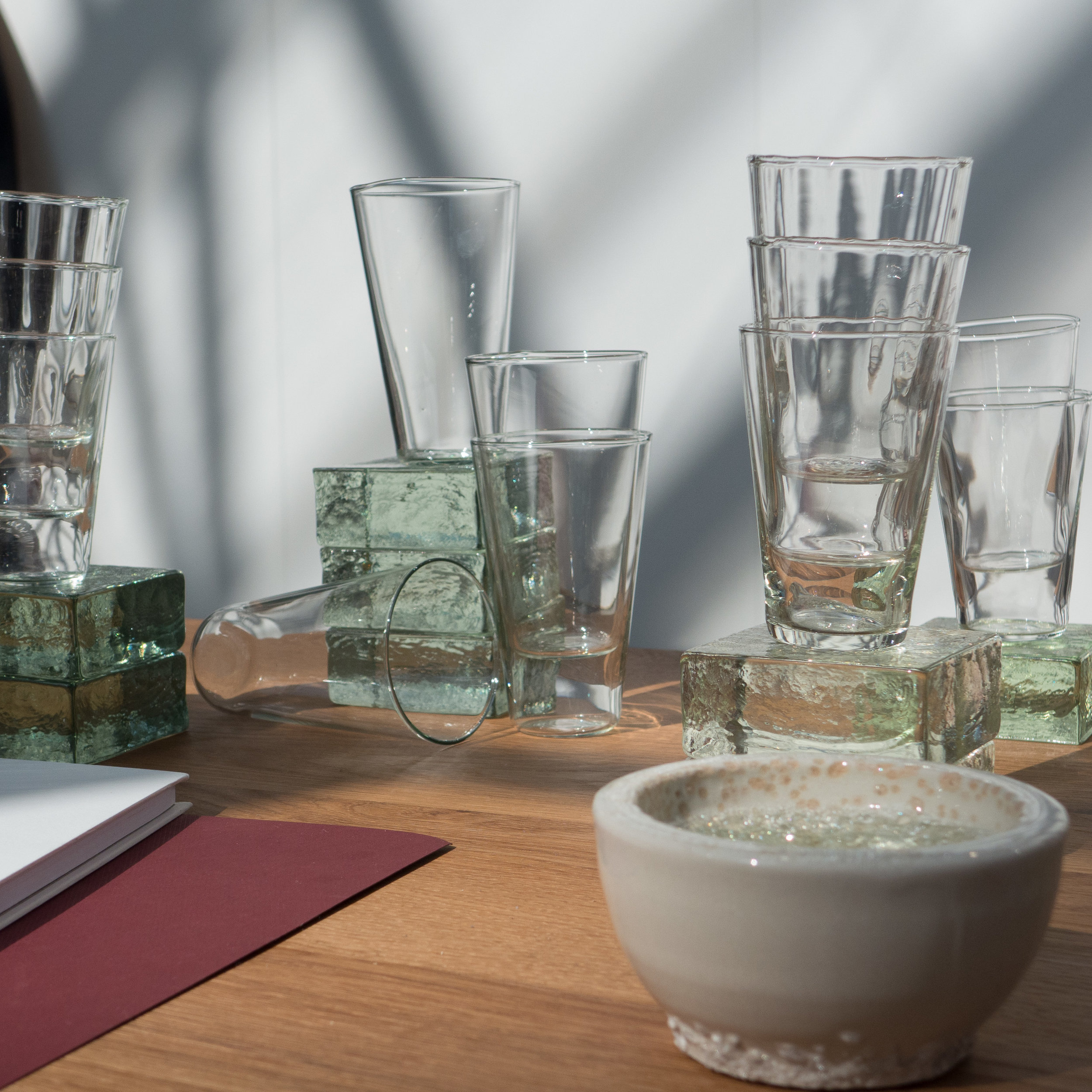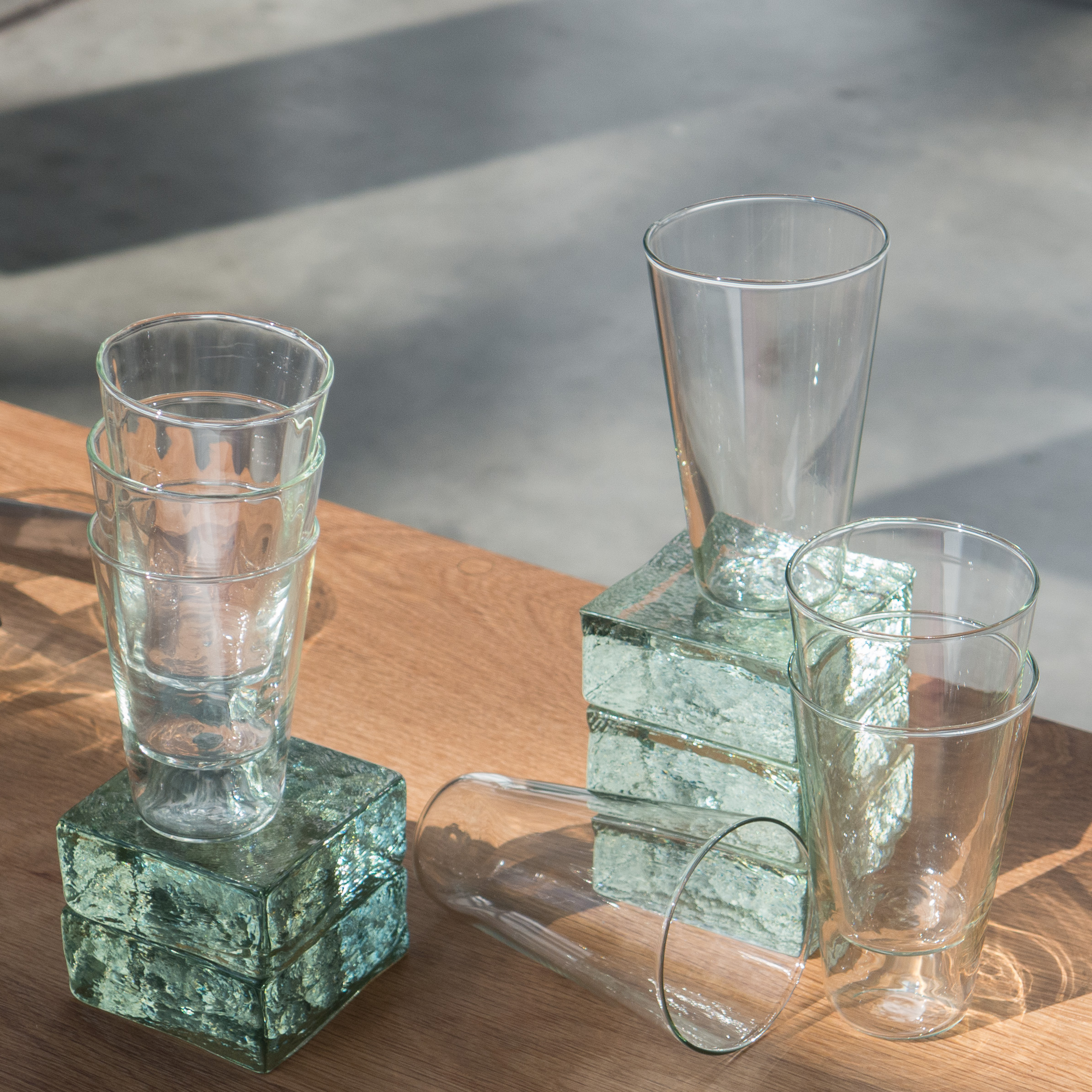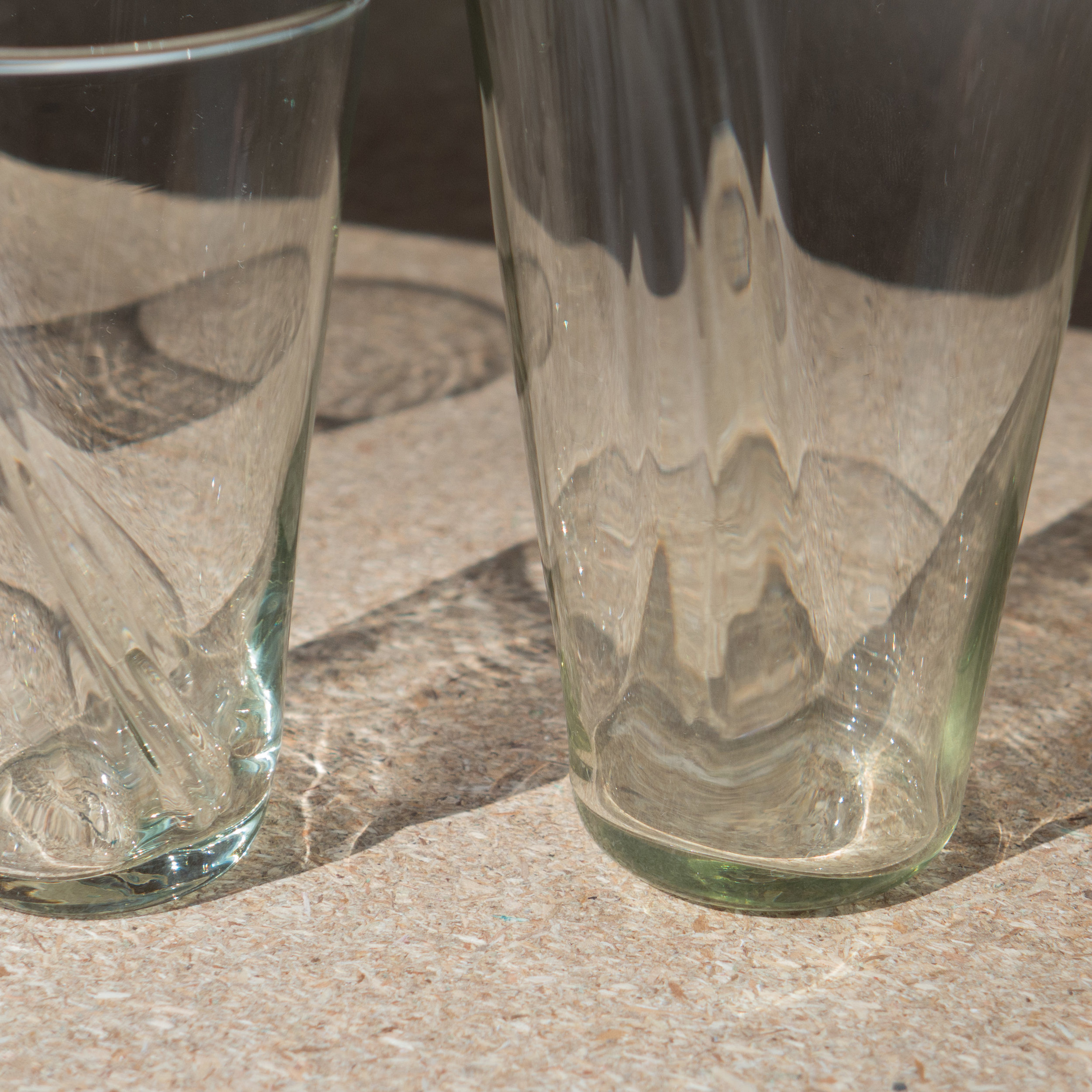The ceramicist Lotte Westphael trained at Kolding and now has her studio in Silkeborg.
Her distinctive and elegant pieces illustrate several major points about design and the design process that have been discussed on this site but are well worth repeating.
These are slabs pots but not the normal style of slab pots that immediately spring to mind. Raising the sides of a vessel by pinching the clay and pulling it upwards or by forming the sides with thin rolls of clay then smoothed together or forming a flat single sheet of clay and then raising it around a flat and usually circular base … making a slab pot … as techniques predate moulding or throwing pieces on a potters wheel. It would be wrong to see such pots as crude or basic and in skilled hands those techniques can be used to make thin and well-shaped and well-finished pots but here the clay is a fine porcelain body in a mixture or recipe that Lotte has developed for this phase of her work and the finished work is an incredibly refined and elegant slab pot. And phase is the right word because on the stall at the craft market it was possible to see several pieces that reflected stages in more than three years of development.
What makes the finished ceramics so elegant and so astonishing is that the partly-dried sheets of clay for the sides are slashed and the strips of darker clay inserted and the sides rolled thinner again so that the design is actually not applied as it might appear to be but is an integral part of the material of the piece. The tall sides are then built up by butting together thinner strips and, as any potter will tell you, the most difficult part and the most vulnerable part likely to be revealed in the firing is any joins. Here the join also has to be precise as the style of the finished work has an exacting graphic quality. The strips added to each other reminded me of ikat and textiles where strips or woven ribbons are sewn together to form a larger piece. When I suggest that, Lotte Westphael smiled and said that actually she has studied in Japan and suddenly it was obvious that the finished works do have that fascinating design aesthetic that can be seen independently and with clear but subtle differences in Denmark and in Japan. The colour palette of the finished works could be typically Danish or, on the other hand, typically Japanese.
What these ceramic works show so clearly is a complicated relationship between the interests and the evolving style of the artist; a design concept that evolves and develops over a sequence of works and designs for pieces that rely on the confidence to push both the material and the techniques used in new directions or to new boundaries or limits. To use phrases like confidence or courage when talking about design might seem odd to someone who does not design or does not make but actually that sense of focus combined with the determination to realise an idea is at the core of much new design work. Courage? Well yes. For most potters the works they sell are their only income. So safer to stick with making what people have bought before. Confidence? Well yes because, for instance here, the clay in the early stages of the production is not self supporting so the sides are set out around a former but as the clay dries it shrinks so remove it too soon and the piece collapses or try to remove the former too late and it won’t come out. Hours of work can be lost.
A kiln will take days and days of work in a single firing. Get that firing wrong and that time and that potential income is lost. Few potters would talk about those aspects of their work to a customer … particularly in the environment of the craft market … but this clearly is a good example of one of those points where design skills, technical skills, the understanding of what the materials can or cannot do and the imagination to try and realise new ideas all come together.
Lotte Westphael, Anedalvej 1b, Silkeborg




